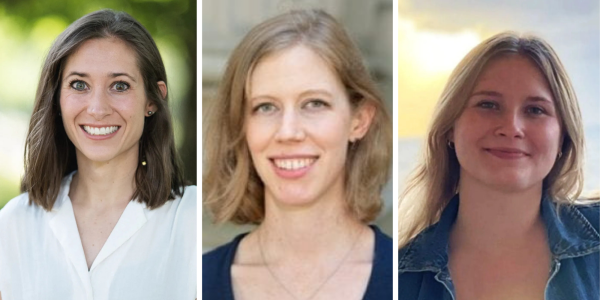What's even better than reading a compelling book about women's history? Learning directly from the book's author! First-year student Jesse Price writes about her experience in Diana Montaño’s course “Angels, Prostitutes, and Chicas Modernas: Women in Latin American History.”

Last semester, I decided to take Professor Diana Montaño’s first-year seminar, “Angels, Prostitutes, and Chicas Modernas: Women in Latin American History.” This course was one of the best introductions to WashU I could have had. We read numerous articles and excerpts, but two of our most important readings were Dr. Erika Edwards’ book “Hiding in Plain Sight” and Dr. Natasha Varner’s book “La Raza Cosmética.” Professor Montaño suggested the class invite Dr. Edwards and Dr. Varner to speak to our class. I was surprised and excited; I had not even considered the possibility of engaging in discussion with the authors themselves.
My group invited Dr. Edwards, secured an honorarium, and wrote questions about the book. This involved many emails and, of course, a shared Google Doc. Though the process was time consuming at times and involved coordinating between various people, it was extremely rewarding. I got a taste of academia when organizing and engaging in discussion with Dr. Edwards.
The day of our conversation, I was full of nerves. I was worried the description we wrote to introduce her would be inaccurate, or a question would not make sense, or we would not fill the time. Of course, this was just my anxiety talking. The moment Dr. Edwards appeared in our Zoom call and began speaking, my restlessness disappeared. My group alternated asking questions and then opened the discussion for questions from the class.
Two examples of questions we asked Dr. Edwards are:
- To what extent did the Free Womb Act empower enslaved women and their bodies? In what ways did it restrict their personal liberties in favor of that of their children?
- Your book uses a variety of visual representations such as censuses, marriage records, and city layouts to accurately image Cordobes society. When examining these sources, what is your process of reading these documents and when you encounter silences in data, what are your next steps?
It was fascinating to learn about her research process. Her research in history involved digging around for hours in archives, piecing together small bits of information into a comprehensible story. Another way we got a glimpse of what it is like to be a historian was through questions from Dr. Montaño and Dr. Valerio, a professor of Spanish here at WashU who focuses on the African diaspora. I saw firsthand how important dialogue is for academics.
I would highly recommend this course to any first-year interested in history, especially Latin American and women’s history. Professor Montaño constantly pushed us to question our assumptions and justify our opinions. The book author discussion was just one highlight of the course, and I encourage others who want to learn about history and academia to sign up this fall.




